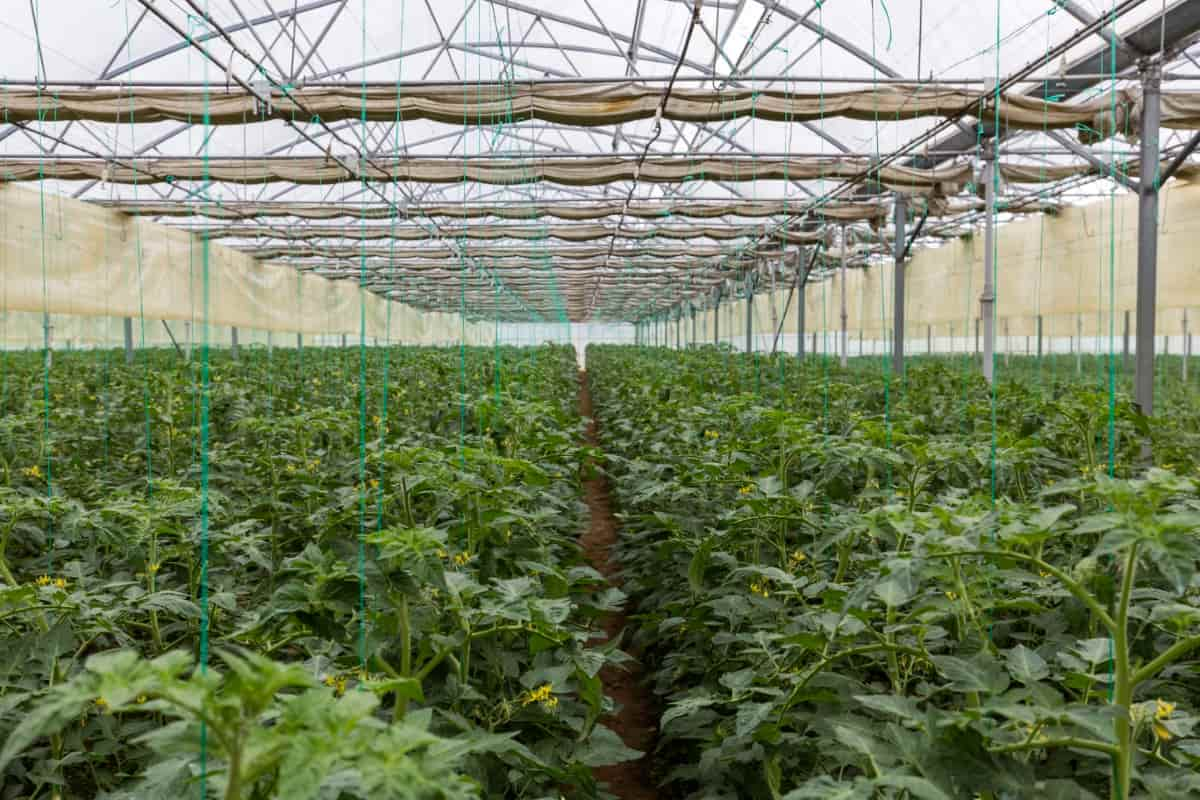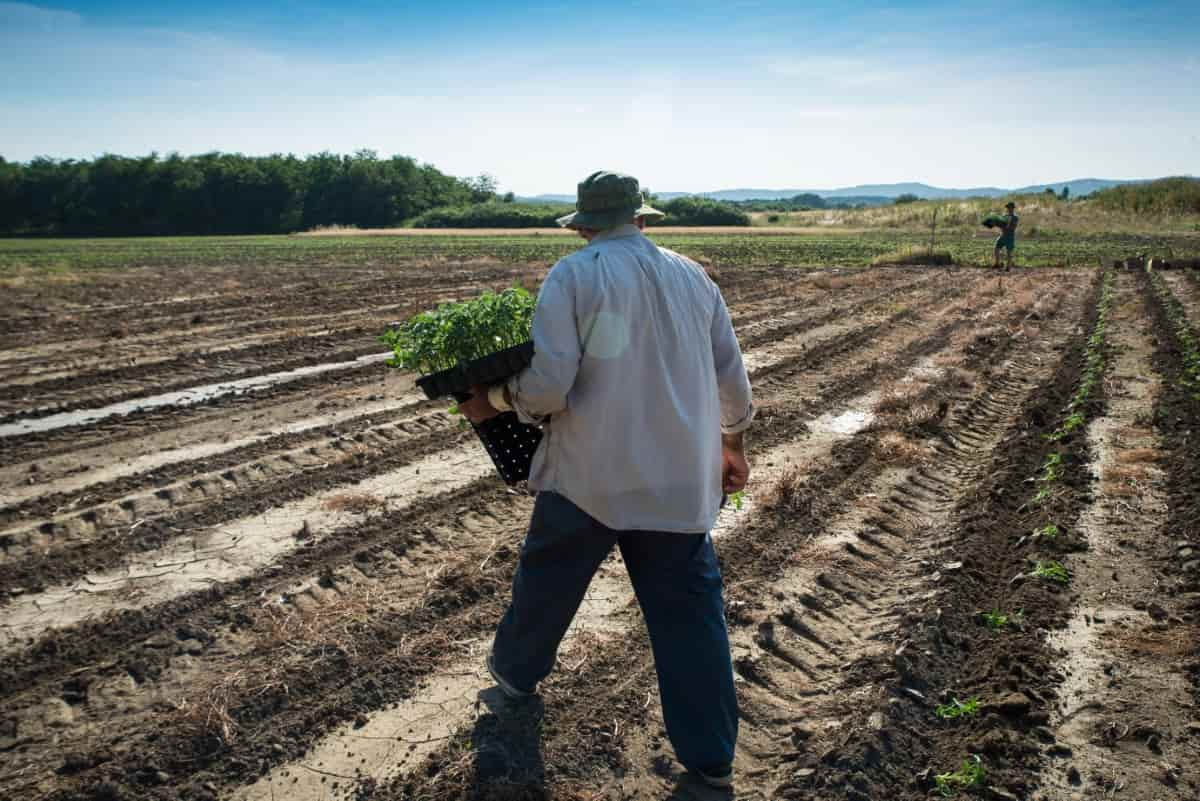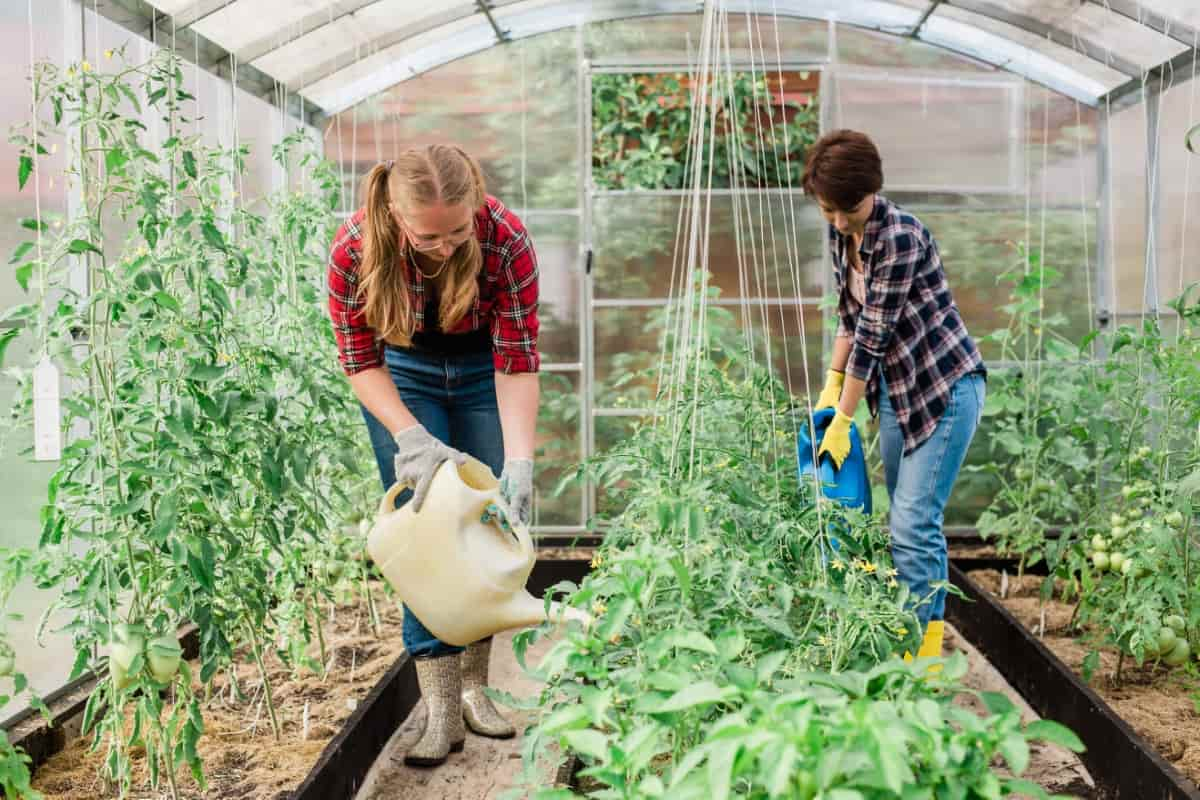Tomato gardening is both an art and a science, where every detail counts, especially when it comes to plant spacing. This comprehensive guide dives into various aspects of tomato plant spacing, addressing different scenarios like container gardening, greenhouse cultivation, and the impact of pruning and seasonal changes.

Whether you’re working with indeterminate or determinate varieties or navigating the nuances of raised beds and double-row planting, this article provides essential insights and practical tips for gardeners at all levels. By the end of this guide, you’ll have a thorough understanding of how to space your tomato plants for the best possible results.
Tomato Plant Spacing
Importance of Tomato Plant Spacing
Understanding tomato spacing is crucial for every gardener aspiring to achieve high yields and healthy plants. Proper spacing ensures adequate air circulation, which reduces the risk of diseases and pest infestations. It also provides each plant enough room to grow and access sufficient nutrients and sunlight.
Particularly in tomato plant spacing raised bed settings or when using double row tomato spacing, it ensures that each plant receives the care and resources it needs. This practice is not just limited to large gardens, as even in smaller spaces like tomato plant spacing in pots, it remains equally important. By respecting the space needs of each tomato plant, gardeners can expect not only a bountiful harvest but also healthier, more robust plants.
What Factors Affect Tomato Plant Spacing?
Several factors influence the optimal spacing of tomato plants. These include the variety of tomato, the type of growth (determinate tomato spacing or indeterminate), the growing environment (like tomato spacing in rows or in pots), and the method of cultivation (such as in a traditional garden setting or a raised bed).
For instance, tomato plant spacing raised bed conditions differ from traditional garden beds due to the confined space and soil conditions. Similarly, tomato spacing in pots requires consideration of pot size and the plant’s root system. Understanding these nuances helps in planning and executing a successful tomato cultivation strategy, ensuring that each plant has enough room to thrive.
Determine Optimal Tomato Plant Spacing
To determine the optimal tomato plant spacing, consider the growth habits and size of the variety being planted. Generally, spacing recommendations range from 18 to 24 inches apart in rows that are spaced about 4 to 5 feet apart. This spacing allows for sufficient airflow and sunlight penetration, which is essential for healthy growth.
In raised beds, the spacing might be slightly tighter, utilizing the area efficiently. For those adopting double-row tomato spacing, maintaining a gap of 18 inches between plants in a row and about 4 feet between the double rows is advisable. This method optimizes space usage while ensuring plants have enough room to grow.
Spacing for Indeterminate Vs. Determinate Tomato Varieties
Indeterminate and determinate tomato varieties have different spacing needs. Indeterminate tomatoes, which grow and produce fruit continuously until killed by frost, require more space due to their sprawling growth habit. Spacing them about 24 to 36 inches apart is ideal. In contrast, determinate tomatoes, which grow to a fixed size and produce all their fruit at once, can be spaced closer together, typically around 18 to 24 inches.
In case you missed it: How to Prevent Tomato Rot Naturally: How to Control with Natural and Organic Treatment

Understand How Companion Planting Relates to Tomato Spacing
Companion planting plays a significant role in tomato spacing. By planting compatible plants nearby, gardeners can optimize space, enhance soil nutrients, and even deter pests. For example, planting basil near tomatoes can improve flavor and repel harmful insects. However, it’s important to consider the space needs of these companion plants as well. They should not compete with the tomatoes for nutrients, water, or sunlight. Incorporating companion planting into the tomato garden layout requires thoughtful planning to ensure that all plants coexist harmoniously and beneficially.
Avoid Common Mistakes in Tomato Plant Spacing
One of the common mistakes in tomato plant spacing is overcrowding, which can lead to reduced air circulation and increased disease risk. Another mistake is inconsistent spacing, which can result in uneven growth and sunlight distribution. It’s also important to avoid underestimating the size of mature plants, especially when planting in pots or raised beds.
Providing each tomato plant with the space it needs from the beginning will prevent these issues and contribute to a more successful and productive garden. Regular monitoring and adjustments, if needed, are essential to maintaining optimal spacing throughout the growing season.
Adjust Spacing for Tomatoes in Containers
When growing tomatoes in containers, spacing is a key factor to consider. Unlike in-ground or raised bed gardens, the space in pots is limited, impacting root growth and overall plant health. For most tomato varieties, a single plant per pot is recommended, with the pot size being at least 5 gallons to provide adequate space for root development.
In case you missed it: How to Control Leaf Miner in Tomato with Natural, Organic, Chemical, and Homemade Spray

The diameter of the pot should be at least 14-18 inches to ensure enough soil volume and moisture retention. This arrangement ensures that each tomato plant has enough room to grow without competition, leading to healthier plants and a better yield. Additionally, placing the pots at a distance from each other helps in maintaining good air circulation and sunlight exposure, further enhancing plant health.
How Pruning Affects Tomato Plant Spacing
Pruning is an essential practice that directly affects tomato plant spacing. Pruning helps manage the size and shape of the plants by removing excess leaves and non-fruiting branches. This is particularly important for indeterminate varieties that grow continuously. Pruning helps in maintaining the spacing between plants by preventing overgrowth and overcrowding.
Regular pruning allows gardeners to keep plants within their allocated space, especially in dense planting arrangements such as in greenhouses or raised beds. However, it’s important to prune correctly, as over-pruning can stress the plants and reduce yield.
Tomato Plant Spacing in Greenhouse Setting
Tomato plant spacing in a greenhouse setting requires careful planning due to the controlled environment. Greenhouses protect from external weather conditions, allowing for a longer growing season and potentially larger plants. Therefore, spacing needs to be adjusted accordingly. Typically, tomatoes in a greenhouse should be spaced about 18 to 24 inches apart, with rows spaced 4 to 5 feet apart.
This spacing allows for optimal airflow and ease of maintenance, including pruning and harvesting. In greenhouses, vertical growing methods, such as trellising or staking, are often used, which can impact spacing requirements. It’s important to consider these factors when planning the layout of a greenhouse tomato garden.
Seasonal Considerations for Tomato Plant Spacing
Seasonal changes can influence tomato plant spacing decisions. In regions with a short growing season, closer spacing might be used to maximize production within the limited time. However, this requires careful management to avoid overcrowding and disease issues. In regions where the climate is warmer and the growing season is extended, it’s possible to allocate more room to each plant. This facilitates greater growth and improved air circulation.
In case you missed it: Using Neem Oil on Tomato Plants: A Step-By-Step Guide to Natural Way to Control Tomato Pests

Seasonal weather patterns also play a role; for instance, in areas with high humidity, wider spacing helps in reducing moisture-related diseases. Additionally, the timing of planting can affect spacing. Early in the season, plants might be spaced closer to protect them from potential cold damage, while later plantings can be spaced further apart as the plants will have more time and better conditions to grow. Understanding these seasonal dynamics helps in optimizing tomato plant spacing for the best yield and plant health throughout the growing season.
Conclusion
Mastering tomato plant spacing is a key step toward a successful and rewarding gardening experience. Gardeners can enhance the well-being and output of their tomato plants by taking into account elements such as container size, greenhouse conditions, pruning techniques, and seasonal fluctuations.
- Feed Your Flock for Less: Top 10 Tips to Save on Chicken Feed
- Ultimate Guide to Ossabaw Island Hog: Breeding, Raising, Diet, and Care
- Hatching Answers: The Top 10 Reasons Your Chickens Aren’t Laying Eggs
- Eggs and Economics: Breaking Down the Cost of Raising Backyard Chickens
- Defend Your Greens: Proven Methods to Keep Iguanas Out of Your Garden
- Ultimate Guide to Cinnamon Queen Chicken: A Comprehensive Guide for Beginners
- Ultimate Guide to California Tan Chicken: Breeding, Raising, Diet, Egg-Production and Care
- Ultimate Guide to Marsh Daisy Chicken: Breeding, Raising, Diet, and Care
- 10 Types of Chicken Farming Businesses You Can Start for Profits